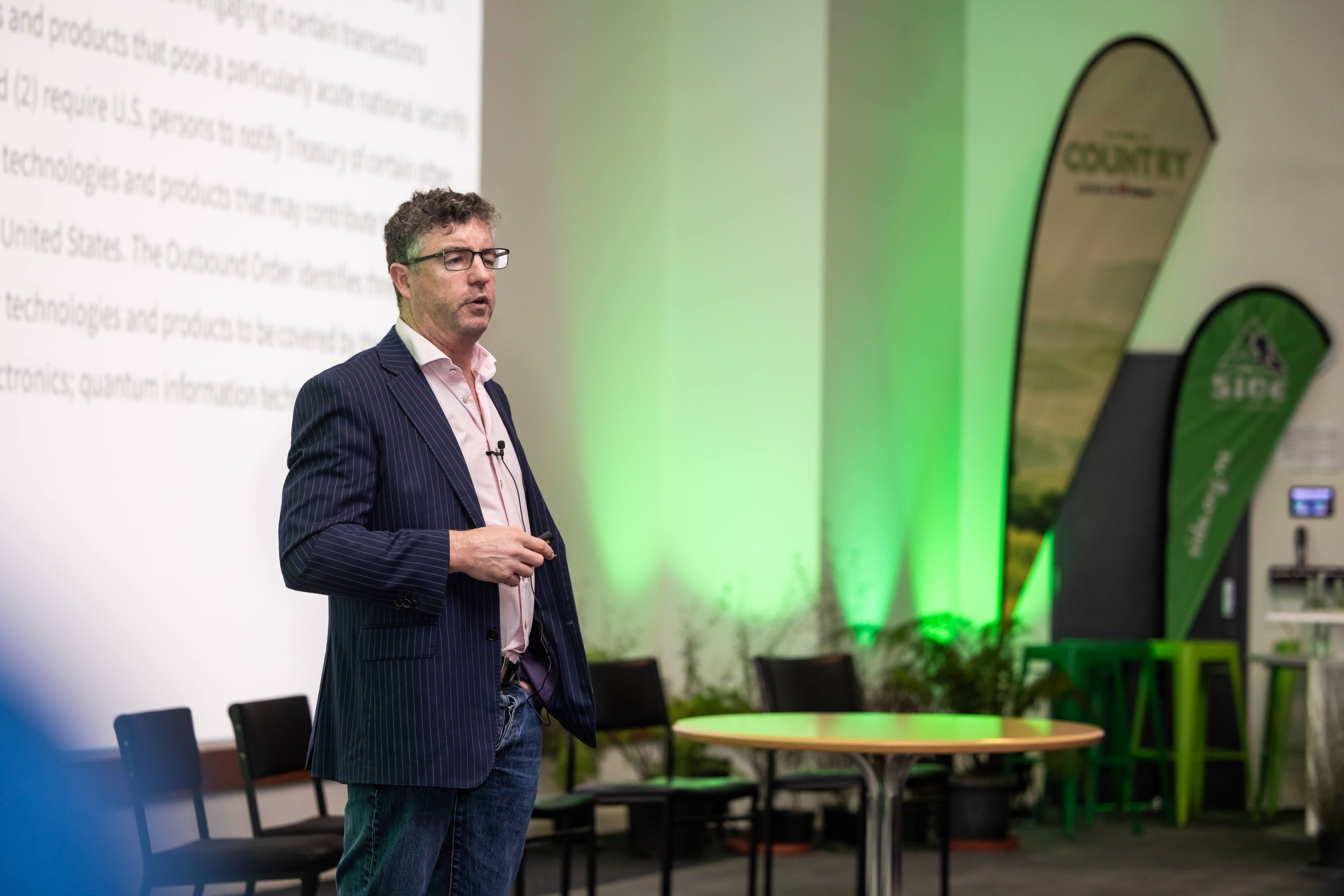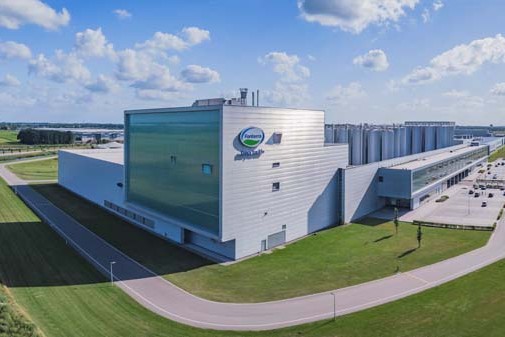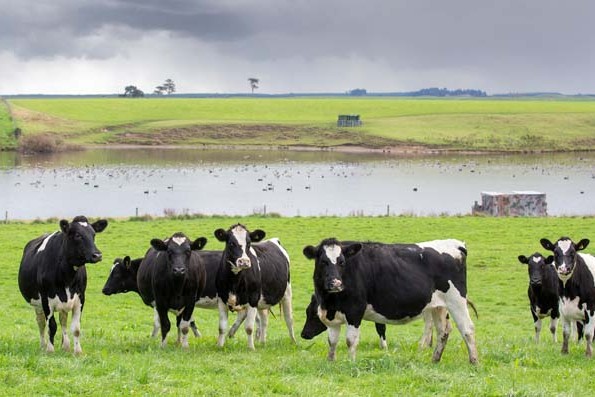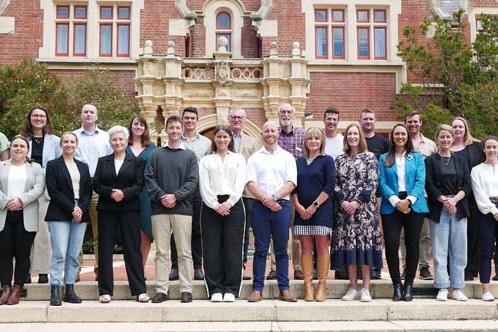By ANNE LEE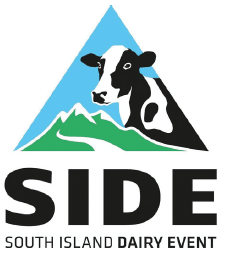
With the sparkle of a high milk price still glinting in the distance it could be easy to get a little distracted from keeping a grip on cost control but don’t do it was the clear message at the South Island Dairy Event (SIDE).
Three proponents of tight cost control, all experienced in the roller coaster of milk price volatility shared their tips on how to set up and run an operation capable of withstanding the lows and still achieve profitability, equity growth and farm ownership.
Carlos Cuadrado, featured in last month’s Dairy Exporter, came to New Zealand from Argentina in 2002 with his wife Gisella.
From a dairy assistant role and withno family financial backing they’ve grown their business and achieved farm ownership of a 430-cow, 120ha property near Oamaru with a cost of production at $3.97/ kg milksolids (MS) for the 2020/21 season while retaining their 860-cow, variable order sharemilking job in Canterbury, where that farm has a total cost of production of $4.21/kg MS.
“You must know the difference between needs and wants.”
In their household Gisella has the answer when Carlos is contemplating a purchase, he says.
‘If others talk about holding every cent a prisoner – well, for us that cent dies in the dungeon.’
“It’s called the five nah’s – I ask, she says nah so I think about it and come back again a few weeks later with why it’s a good idea and she says nah so I think about it some more and so it goes on.”
Eventually if he puts up a good case, usually a revised plan, it might get a yes but the process of rethinking creates discipline.
He’ll also scout around and try and get it for 20% less.
“If others talk about holding every cent a prisoner – well, for us that cent dies in the dungeon.”
OTHER TOP TIPS FROM CARLOS:
- Learn to manage grass well and don’t rely on costly supplements.
- Make use of industry resources to learn all you can, identify and talk to top performers and learn from them so you’re working smarter to get top results.
- Have a do-it-yourself mentality so learn other skills – welding, how to build, for example.
- Don’t buy equipment you don’t use often – hire it, borrow it, come up with a sharing scheme with a neighbour.
- Don’t buy new – avoid over-capitalisation.
- Work hard – your kids will learn that too.
- Record every expenditure, monitor and analyse all the time.
- Question the need for every item and even scrutinize the need for some farm practices – don’t just do it because you always have.
- Use what’s around you.
THE FULTON’S STORY
Hannah Fulton and her husband Craig are 50% equity partners in Paddock Wood, a 160ha effective, 625-cow Canterbury irrigated farm that they also contract milk.
They featured in the November 2017 Dairy Exporter and have progressed through the sharemilking system, winning the 2007 Waikato Sharemilker of the Year Award.
Their first year in Paddock Wood coincided with the payout crash from $8.40/kg MS to $4.40 with no retrospective payments coming in.
“I worked out that for every tanker going down the track we were losing 55cents/kg MS,” she recalls.
“We can’t control the price of milk so we have to control what we can – our cost of production, production and creating extra income.”
Write everything down, she says.
Goals, budgets – financial budgets, feed and production budgets and then monitor them.
Benchmark them too – because that’s a powerful tool, she says.
But when making a plan, make it achievable.
“There’s nothing worse than having a carrot you’re never going to get a bite of.”
Although they don’t have a lot of machinery or depreciating assets, Hannah says she analyses interest payments and repairs and maintenance costs and would rather pay interest on good gear than be repeatedly fixing breakdowns that so often come when you really don’t want them.
OTHER TOP TIPS FROM HANNAH:
- Shop around for products and services – hold people accountable for the prices they are charging you.
- Record everything – they have a red notebook especially for supplement where they have records dating back years on what they paid for what, when. It also has how much silage they’ve made in each paddock and when it was taken.
- Check off invoices as they come in – if you budgeted for 50 bales is that what came? What was the price compared to expectation?
- Monitor and analyse as you go through the season so you can make adjustments rather than waiting till the end when there’s nothing you can do about it.
- Try and create extra income if you’ve got costs down – beefies can be an option but do the analysis every year.
- Go back and fine tune frequently.
- Keep it simple.
FEED BIGGEST CONTROLLABLE COST
Blair Robinson is Dairy Holdings Ltd (DHL) chief operating officer and says feed cost is the single biggest cost centre the company can have control over.
The 54,700-cow operation also has 28,600 young stock and 1500 bulls on 60 dairy farms and 20 support blocks (support blocks both owned and leased).
The dairy farms are run under a mixture of contract milking and sharemilking contracts.
The farms produce about 17million kg MS/year using 20kg drymatter (DM)/cow of bought-in silage.
Keeping the system simple has allowed it to be repeatable and helps ensure consistent performance across the large-scale business.
Imported supplement is only used to “feed the wedge” rather than chasing production.
The operation is self-contained for grazing which limits exposure to market price increases and risks around animal targets as well as disease.
OTHER TOP TIPS FROM BLAIR:
- Limit depreciating assets.
- If you’re buying, look at fixed costs such as irrigation scheme costs. DHL has purposely bought with this factor in mind – $300/ha/year average compared with some schemes more than $800/ha/year.
- Stick to your knitting – keep it simple and do it well.
- Maximise pasture harvested – DHL has lifted that by 2t/ha in the last six years.
- DHL is an early follower of technology – understand it, make sure it’s proven, make sure it gives benefits to major cost areas.
- Include people in early budget setting – a sense of ownership makes them more likely to stick to it.


